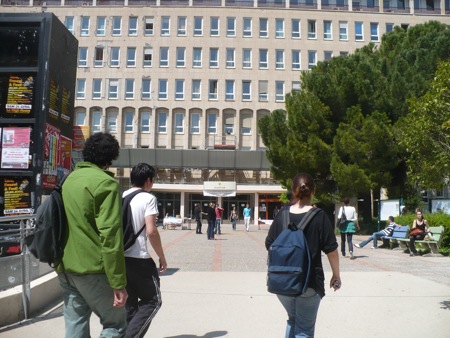Here is a handy anecdote that reminds us of the pedagogical contradictions of radical pedagogy (which I’ve covered before):
But my favorite story about him [one Andrew Levine] concerns the first class he ever taught. It was during the exciting days of anti-Viet Nam War protests and Columbia building seizures, and Andrew was totally engaged. I ran into him as he was off to teach his first discussion section ever. He explained to me that he was eager to break down the authority structure of the classroom. He was going to ask students to call him by his first name [this is back when no one did that], and would have the students sit in a circle so that he would not be in a superior position standing in front of the class. “Andrew,” I said, “these students are not stupid. They know that at the end of the semester, you are going to be the one giving them a grade. You can’t pretend not to be an authority when you really are one.” “No, no,” he protested, “this is going to be different.” Several hours later, I saw him again, and he was quite crestfallen. “They treated me like The Professor,” he said sadly. “But you are the professor,” I said.
The story is from Robert Paul Wolff’s memoirs from the 60s. Of course, it was naive on the teacher’s part to imagine that a change in naming and seating practices would magically transform authority structures. But there are still some things to learn here:
(1) We’re reminded that pedagogical innovation can emerge preferentially from politically charged historical moments, like the Vietnam protests. Implication: we can’t and shouldn’t presume that all historical contexts offer identical pedagogical options. I know this sounds really simple, but I find it hard in practice to have a sensitively historical and institutional way of thinking about pedagogy, even though I know this historicism can be therapeutic. If egalitarian pedagogy doesn’t work at my university in Chicago, maybe that says more about my institution than about the pedagogical project itself…
(2) We have here the rise and fall of a utopia in the span of a few hours. We’re reminded at the outset that the students are not stupid; they understand that outward signs of equality are hardly the same thing as equality. And yet the young professor still believed — we’re not told why — that this is going to be different. There’s something utopian about that kind of moment of stubbornness, about the refusal to accept the socially inevitable that can sometimes (though admittedly not in this case) itself help shift the parameters of social inevitability. Stubbornness is a brilliantly political emotion. I don’t have an analysis of that yet, though I’m interested in what happens when stubbornness becomes a political symbol. Perhaps I should think about pedagogical stubbornness as well.
(3) The moment of the professor being interpellated as the professor by the students seems worth thinking about. (“They treated me like The Professor!” we’re told sadly) Are the students demonstrating instrumental rationality in this moment, tacitly calculating that it’s just not worth their while to participate in their professor’s privileged anti-institutional desire? Are they just demonstrating some kind of typical student habitus of deference or a will to self-subordination? Or is there some more positive interpretation of this kind of student behavior? Autobiographically speaking, I’ve had lots of great teachers who I happily treated and recognized as teachers, even while usually still trying to assert my own intellectual agency one way or another… I haven’t really worked this through, so far.



